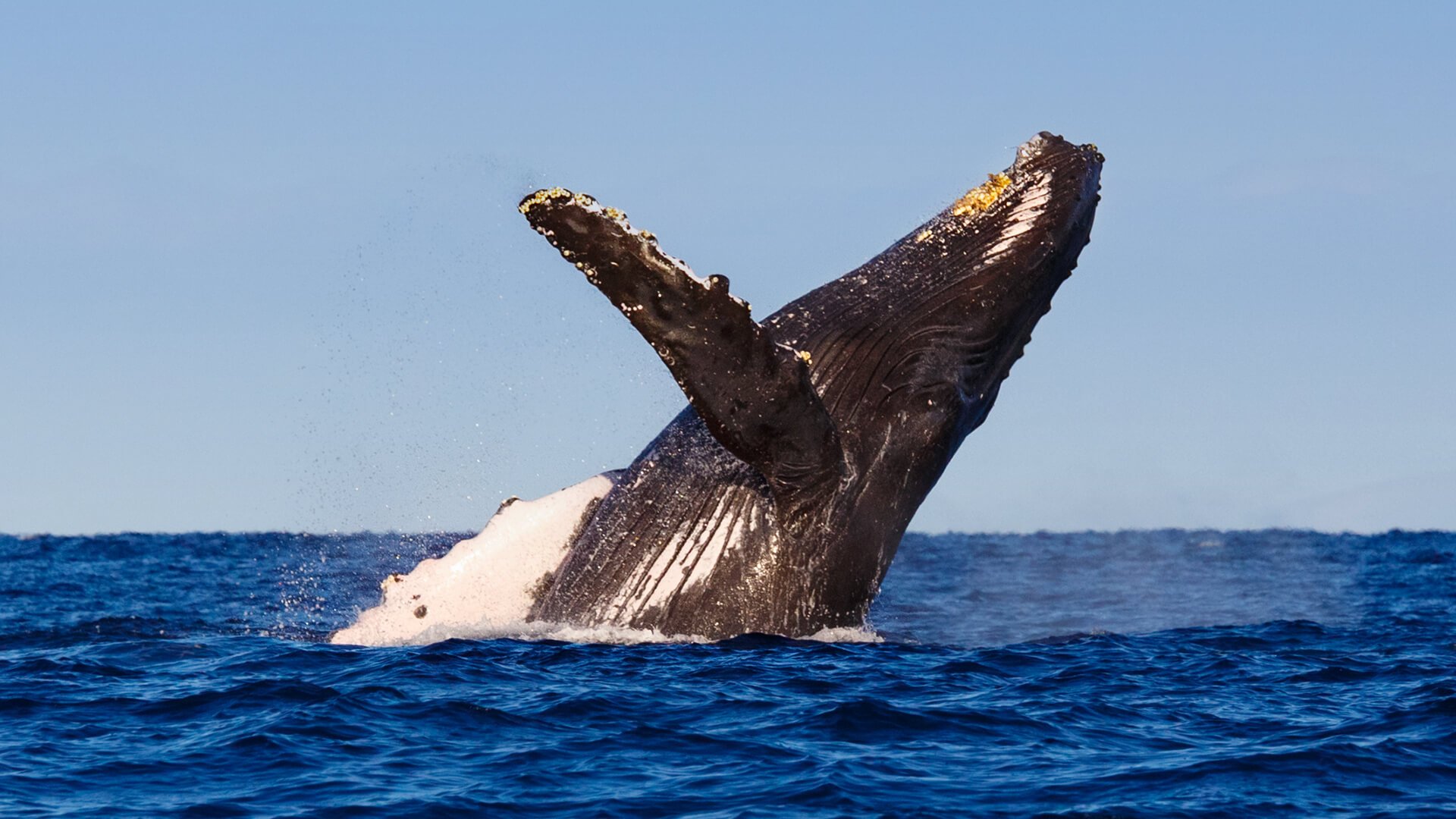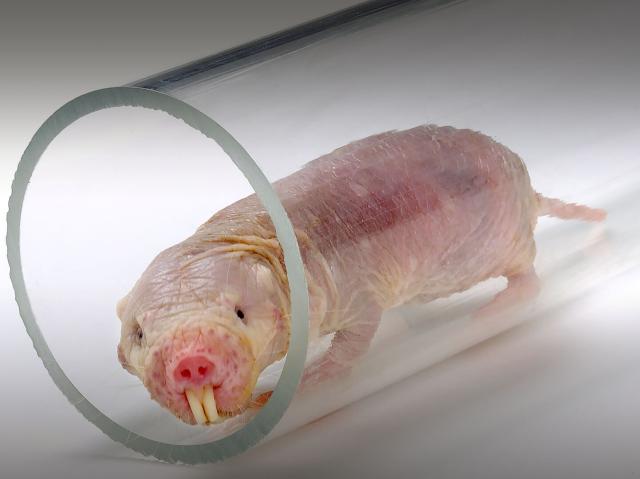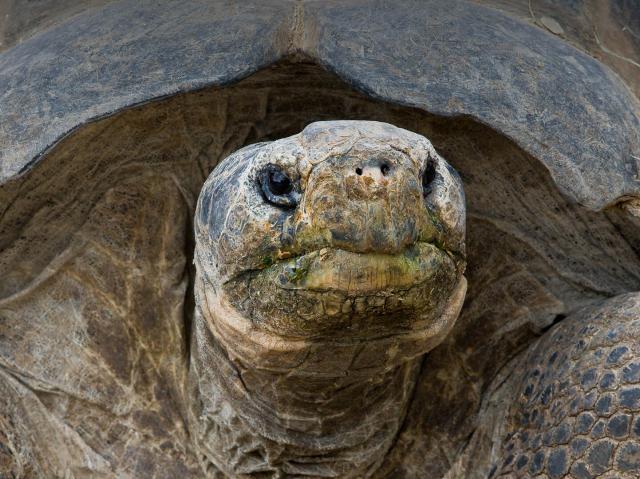
Whale

- CLASS: Mammalia (Mammals)
- ORDER: Cetacea
- SUBORDERS: Odontoceti (toothed), Mysticeti (baleen)
- FAMILIES: 14
- GENERA: 44
- SPECIES: 83

ABOUT
Mammals of the sea: Whales come in different sizes, but they all have smooth skin, flippers, and flat tails (called flukes) that propel them through the water. They give birth and nurse their young in the water and live their entire lives there. Their specialized nose and ears have adapted to life underwater. They have excellent vision, large brains, and are highly intelligent.
Whales are divided into two groups: toothed and baleen. There are 69 toothed whale species, including sperm whales, beluga whales, and narwhals. Bottlenose dolphins and killer whales are in this group as well. Toothed whales have one blowhole (adapted nostril) on top of the head that divides into two nostrils inside the head. They use echolocation to find food. There are 13 baleen whale species, including the gray whale, blue whale, and humpback whale. Baleen is made up of tough, flexible strands of keratin that hang down from the top of the whale's enormous mouth. Baleen whales are much larger than most toothed whales and have a double blowhole on top of the head. They gulp huge amounts of seawater, and then strain out the water to catch the tiny sea creatures they eat. Scientists are still studying whether or not baleen whales use echolocation.
Toothed whales make sounds that travel underwater. The sound waves bounce off an object and then return to the whale as echoes. Submarines use the same method to navigate through the ocean. This echolocation allows the whale to find food or avoid predators, even in dark or murky water. Research has proven that the sounds come from deep inside their head, and not from their throat as with other mammals. The sounds come from air vibrating through their complex nasal passages.
Whales have special adaptations for diving. They generally dive on a full breath of air. The air in their lungs is compressed by the sea's pressure as they dive. When they dive, their body uses less oxygen by sending it to vital organs such as their brain, heart, and lungs. Their heart rate slows down, and they can tolerate higher levels of carbon dioxide than humans. Sperm whales are champion divers, often diving more than 1 mile (1.6 kilometers) deep for more than one hour!
Whales make lots of different kinds of sounds, including trills, whistles, moans, and squeals. Whistles seem to be used mainly for communicating with other whales. Single male humpback whales make their famous whale songs during the winter mating season.
HABITAT AND DIET
Whales are found worldwide, in all oceans and adjoining seas, as well as certain lakes and river systems. Toothed whales eat fish, octopus, squid, and crustaceans like shrimp. Baleen whales eat krill (tiny shrimplike creatures) and zooplankton (tiny animals), strained from huge seawater. Gray whales suck up mud from the ocean floor and strain out the small worms and crustaceans that live there.
CONSERVATION
Humans have hunted whales, mainly for their blubber (oil), for thousands of years. Present-day whalers use the meat as well as the blubber. At first, small-scale hunting did not affect whale populations. But in the last 200 years, humans have built bigger ships and better equipment to hunt and kill larger whales in faraway oceans. Humans have hunted whales for their meat, baleen, oil, and hides.
Whale hunting, pollution, and human development along oceans and rivers have seriously impacted some whale populations. Eleven species are endangered, including the blue whale Balaenoptera musculus, sperm whale Physeter catodon, and humpback whale Magaptera novaeangliae.
The good news is that not all whales are endangered. Of those that are endangered, some populations are at higher risk of extinction than others. One great success story is the gray whale, which was hunted to the brink of extinction twice and now has completely recovered due to protection and conservation efforts.
By supporting San Diego Zoo Wildlife Alliance, you are our ally in saving and protecting wildlife worldwide.
Sounds
LIFE SPAN
Some species are thought to live more than 100 years
YOUNG
Gestation: 9 to 17 months, depending on species
Number of young at birth: 1
Age of maturity: Females, 4 to 28 years; males, 4 to 35 years, depending on species
SIZE
Length: Longest - blue whale Balaenoptera musculus, 70 feet (21 meters); shortest - Hector's beaked whale Mesoplodon hectori, 4.5 feet (1.4 meters)
Weight: Heaviest - blue whale, 63 tons (64.4 tonnes); lightest - Hector's beaked whale, 105 pounds (48 kilograms)
FUN FACTS
Gray whales make the longest migration of any whale, traveling from Alaska to the coast of Mexico. This is a round-trip journey of more than 12,000 miles (20,000 kilometers).
The blue whale is the largest mammal to have ever lived on Earth.
Unlike a fish's tail, which is flat-sided, a whale's tail is perpendicular to its body, like an airplane's tail. A whale uses an up-and-down tail motion to swim, but a fish uses a back-and-forth tail motion.










